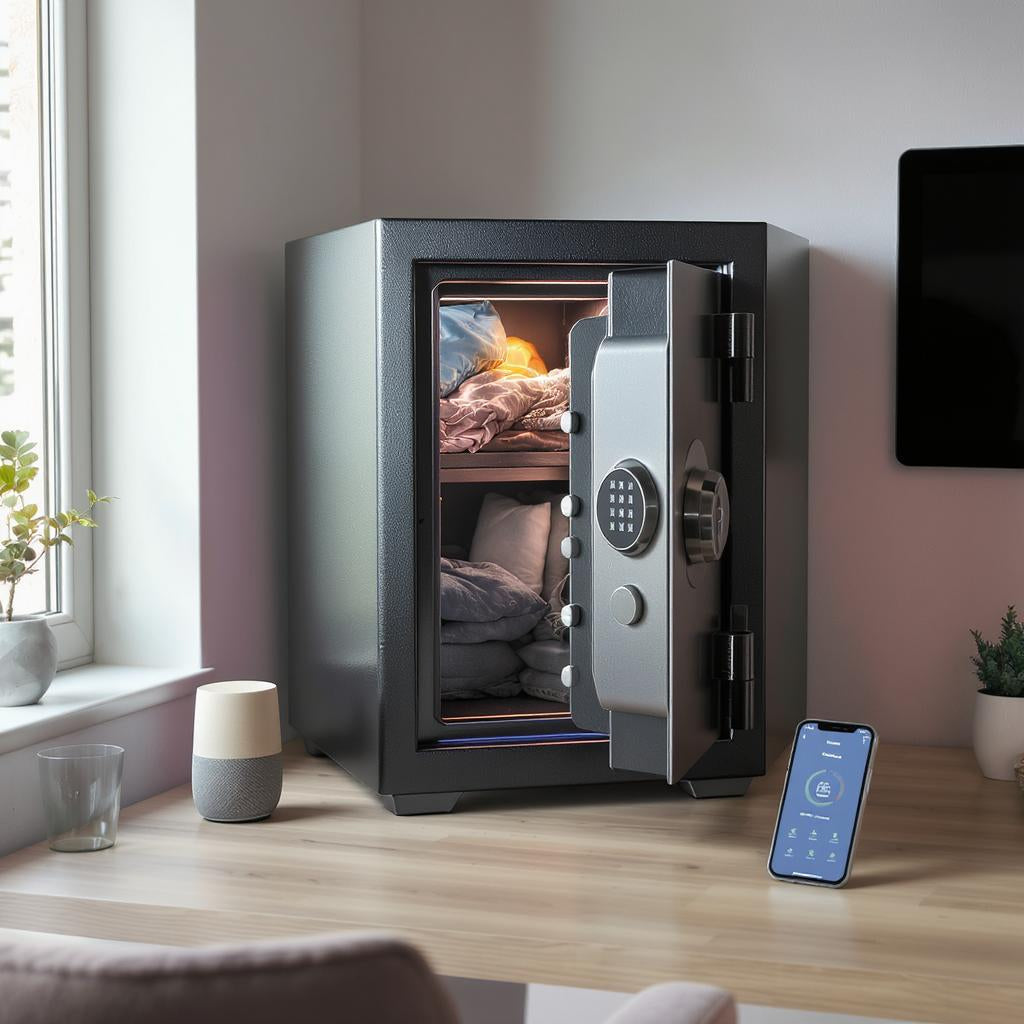Smart home tech is no longer just about lights and thermostats. In 2025, even your safe can be connected. From fingerprint entry to app-based access and real-time alerts, smart safes are changing how we protect what matters.
Are you an homeowner? or running a business? Here's what smart home integration looks like for safes today—and what to expect going forward.
What Is a Smart Safe?
A smart safe goes beyond the traditional lock and key. It connects to your phone, network, or smart home system to give you more control over access, monitoring, and security.
Core features may include:
-
App-based locking and unlocking
-
Biometric entry (fingerprint, face scan)
-
Remote access logs and user tracking
-
Voice assistant compatibility
-
Alerts for tampering, failed access, or door status
Smart safes still offer physical protection, but now with added digital layers.
Types of Smart Safe Technology
There’s no one-size-fits-all solution. Smart safes vary depending on your needs and how much integration you're looking for.
1. Bluetooth-Enabled Safes
-
Connects directly to your smartphone via Bluetooth
-
Unlock with your device, even without Wi-Fi
-
Short-range access only, ideal for home use
2. Wi-Fi Connected Safes
-
Syncs with cloud-based apps for remote management
-
Send unlock codes to family or staff
-
View open/close logs from anywhere
-
Receive real-time alerts via email or phone
3. Biometric Smart Safes
-
Use fingerprints or facial recognition
-
Fast, secure access without codes or keys
-
Great for shared spaces or multiple users
4. App-Controlled Safes
-
Apps allow multi-user permissions
-
Add or remove access on demand
-
Schedule time-restricted access (e.g. business hours only)
5. Voice Assistant Integration (Alexa, Google Home)
-
Limited but growing
-
Ask your assistant for safe status or history
-
Some allow unlock with a secure voice PIN (not recommended without 2FA)
Best Use Cases for Smart Safes
Homeowners:
-
Let family members access the safe remotely
-
Get alerts when kids access medicine or valuables
-
Track access during holidays or when guests stay over
Small Business Owners:
-
Track when employees open the safe
-
Schedule timed access for cash drops or shift changes
-
Remotely remove access if staff leave the company
Collectors & Hobbyists:
-
Monitor access to collectibles, firearms, or sensitive materials
-
Use biometric safes to keep high-value items protected yet accessible
What to Consider Before Buying
Not all smart safes are created equal. Here’s what to weigh before you commit:
1. Security Standards
-
Is the safe AiS-approved or Eurograde rated?
-
Does smart functionality compromise physical strength?
-
Is there a manual override in case of tech failure?
2. Connectivity Type
-
Bluetooth is great for simple access but has limited range
-
Wi-Fi offers more features but depends on stable internet
3. App Quality
-
Is the app reliable, well-reviewed, and updated regularly?
-
Does it support Android and iOS?
-
Are logs and alerts detailed enough for your needs?
4. Power Source
-
Battery-powered or plug-in?
-
What happens during a power cut?
-
Look for low battery alerts and backup key access
5. Privacy & Data Security
-
Is the app encrypted?
-
Who has access to your data and logs?
-
Can you delete or export access history?
Smart Safe Brands and Features to Watch
Some of the most forward-looking safe manufacturers now include smart features as standard or add-ons.
SentrySafe Smart Series:
-
Fingerprint and app control
-
Tamper alerts
-
Fire- and water-resistant models
Yale Smart Safes:
-
Keypad and biometric entry
-
Wi-Fi module compatibility
-
Integration with Yale smart home ecosystems
Master Lock Bluetooth Safes:
-
Compact, mobile-friendly
-
App alerts and multiple user permissions
High-End Custom Safes:
-
Luxury safe brands offering bespoke smart systems
-
Ideal for collectors or high-net-worth installations
Limitations and What’s Next
Smart safes aren’t perfect yet. Some limitations to be aware of:
-
Voice unlocking still isn’t widely trusted or secure
-
App updates can affect access reliability
-
Not all insurers recognise smart tech as compliant
That said, expect more safes to integrate:
-
NFC unlocking (tap to open)
-
AI-powered access monitoring
-
Smart home automation (e.g. lights on when safe is opened)
Final Thoughts
Smart home integration is giving safes new capabilities without sacrificing core protection. Whether you want to track access, enable remote unlocking, or just ditch the key, smart safes in 2025 offer real advantages.
As always, start with what you need to protect. Then choose a smart safe that gives you control, access, and peace of mind in a way that suits your lifestyle or business.

